How to choose running shoes?

If this is your first time choosing a running shoe, there are many things to consider. Choose the right model, sole and material and then running will be a real pleasure!



Which are suitable for running?
There is no shortage of running shoes to choose from today. A beginner is more likely to face another problem - the widest range of sneakers for every taste.


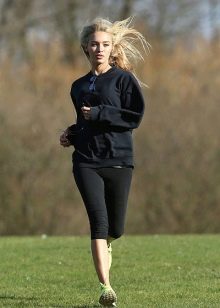
There is no one universal model that is suitable for comfortable jogging on the street and in the gym all year round.



For running on asphalt, dirt and synthetic surfaces, you need to select different models of sneakers that will protect you from unnecessary injuries. If you are serious about jogging, you should have at least two pairs of sneakers - summer and winter, matched to the surface you usually run on.


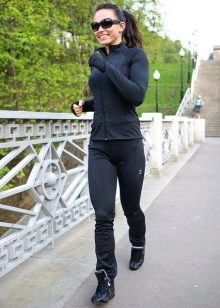
Views
Trail
This running shoe is designed for running in a forested area. They are suitable for moving along paths with soil, small vegetation, rocky terrain. In short, they are ideal for off-road use.

They have an aggressive pattern on the outsole that resists sliding on the ground. Rigid outsole pads protect your feet from bumps and bumps as you run. Most models have a hard toe cap that protects your toes.



For urban running
If you live in a city and run in a nearby park or on a highway, the tarmac model is for you.

The outsole should be ribbed to prevent slipping, but not as deep as on trail shoes. Sneakers should be breathable, protect your feet from deformation and have good cushioning. The most important thing is to have good cushioning, which will prevent your feet from hitting hard asphalt. Good sneakers have special inserts in the heel and toe area, because these are the areas that get the most stress.



For the gym
If you only jog on the treadmill as a warm-up 2-3 times a week, the regular sneakers in which you work out in the gym will be enough for you. They have a little cushioning, which is enough for moderate runs.

If you do intense jogging on the track, especially for heavy runners, then you need special running shoes. Models for urban running are suitable, which have the necessary shock-absorbing elements.

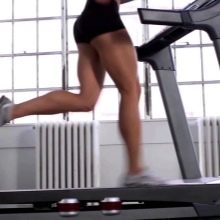

Waterproof
If you love to run outside in any weather, rain or snow, you will need a pair of spare waterproof trainers. They are equipped with a Gore-tex membrane, which prevents feet from getting wet, but at the same time allows air to pass through, so that the skin breathes. For winter, it is worth purchasing an insulated waterproof model, which will additionally protect your feet from the cold.



Seasonal selection
Winter
Insulated, waterproof sneakers that keep your feet dry and warm. If you are running on tarmac, a regular sole will suffice. Trail models usually have a special sole with metal spikes that allows you to move on ice and snow. It allows you to securely fix on slippery surfaces, minimizing the possibility of falls and injury.



Summer
A lightweight, breathable shoe that's perfect for running in warm, dry weather. In case of rain, you'll need another pair of waterproof trainers. In order not to spend money on special summer ones, you can choose the all-season option.



All-season
This sneaker refers to a versatile urban running shoe. If you do not run every day, and only on asphalt or in the hall, one pair of sneakers will be enough for you for the whole year. In winter, you can wear a warm sock to keep your feet warm. In case of bad weather, you can simply stay at home by going for a run on another day.



What should be the material?
Choose a shoe made from quality material that is both durable and soft at the same time. Forget about natural leather, which will interfere with normal ventilation of the legs.



It should be a natural breathable material that will allow your feet to breathe and prevent sweating. Most of the time, running shoes have mesh inserts that do this feature well.
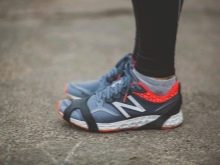


How to choose the size?
Choosing the right running shoe size is important to help protect your feet from sprained toes, calluses, and other injuries. Running in the wrong shoe size can cause serious injuries that need to be treated by a surgeon.

- For most people, the length of the feet is slightly different from each other, so you need to measure their length on both feet. When choosing sneakers, you will need to focus on the longer foot.
- To measure the length of your foot, place it on a piece of paper, pressing it firmly against the floor. With a pencil, make two marks - front and back, in the most prominent places, and then measure the length between the marks.
- Since you will be running in socks, you need to add their thickness to the result obtained. A conditionally thin sock adds a floor size, and a thick winter sock adds a whole size. Also, during training, blood will flow to your feet, due to which they will additionally increase in size.

If you're shopping for summer or treadmill shoes, a half size larger pair will suffice.All season running shoes should be one size larger, and winter shoes should be one and a half larger.


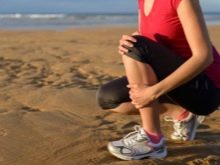
We take into account various nuances
Sole
There are three types of outsole on running shoes:
- Flat. Suitable for runners with low instep and an almost level foot. Sneakers with such a sole will fix the inner part of the foot, preventing it from falling inward.
- Curved. Essential for high-rise runners. Thanks to good cushioning, it will fix the back of the foot, preventing it from falling out.
- Slightly curved. Optimal warrant for runners who have no foot problems.




Depreciation
Because of the high stress on the entire body during running, you need to choose a shoe with good cushioning that will prevent impacts. The heavier you are, the better the cushioning should be. It can be made of various materials: special gel, foam, or corrugated plastic.



Socks
Many runners neglect the choice of running socks in vain. They can be found both from well-known manufacturers and from democratic brands. They are made of highly elastic fabric that is breathable and good at wicking moisture away.


Compression knee socks and leg warmers are popular. They tightly squeeze the leg, which accelerates the flow of blood through the veins. This helps to recover faster after strenuous physical exertion.

Frequent mistakes when choosing
- For running, sneakers with thick, soft soles are not suitable. But if you have run in such sneakers before, you cannot abruptly refuse them. Reduce the thickness gradually, going from thick to medium and then thin.
- The thickness under the heel should not be much different from the thickness of the rest of the sole. The optimum drop is no more than 3 mm.
- Sneakers should not be tight in the toes, otherwise they will only be involved in repulsion. To run properly, they need to be spread out and give your fingers enough space.
- People with a lot of weight should choose sneakers with thick soles., small drop and wide toe. This will reduce the stress on the joints of the legs while running.




We've covered the basics of choosing the right running shoe to help you make the right choice.










